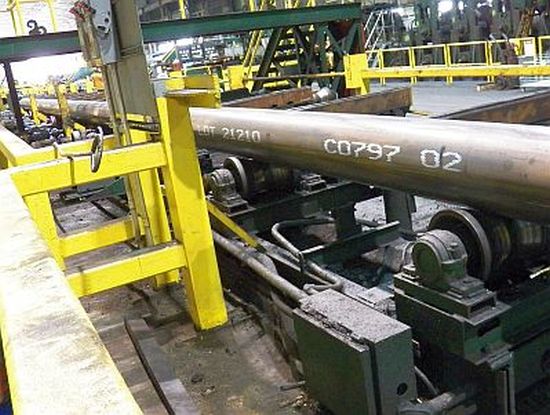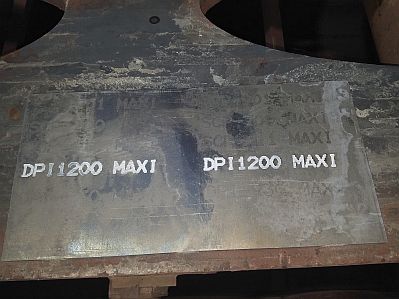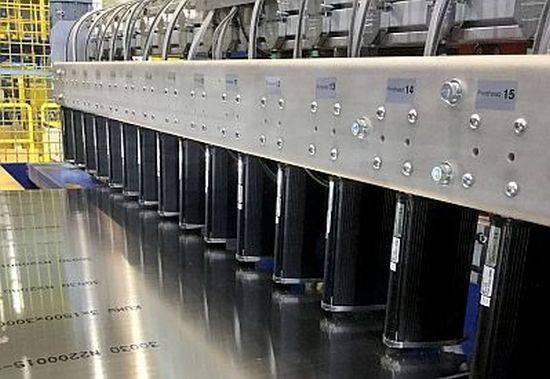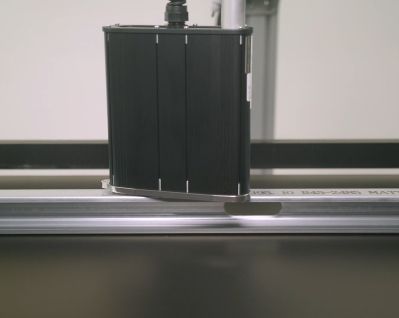Advanced Metal Marking and Coding Systems: 5 Key Factors to Consider Before You Invest
Metal marking and coding is integral to the manufacturing of metals and metal products. But with so many moving parts -- both literally and figuratively -- in the manufacturing process, marking and coding systems may not be top of mind every day. That is, until your marking equipment breaks down or requires an upgrade. If you're in that situation, Kevin Havre, Global Product Manager for Matthews Marking Systems, details 5 things to consider before making the investment.

Kevin Havre is a global product manager for Matthews Marking Systems, a leading supplier of industrial marking and coding systems.
If you haven't paid attention to marking and coding for a while, there are several reasons to consider upgrading your equipment -- from better efficiency to saving time and money through automation. When it's time to upgrade your marking and coding equipment or invest in something new, knowing your current processes -- and potential future needs -- is essential. Here are five key factors to consider.
#1 What are your marking and coding requirements?
When most of us think of metal marking, we think about primary identification -- such as company name or brand trademark, part numbers, sizes and other descriptors. Or we may think about barcodes that are used for retail and external traceability and regulatory compliance.

But there are also significant operational uses for marking that can improve your efficiency. For example, marks may be used for internal tracking and traceability, to put orientation or location marks that facilitate a metal product moving through a production line, for inspection and defect marking (or to certify that a product has passed inspection) and the emerging use of 2D bar codes that support automation processes. Even if you're not doing this level of marking currently, you should ensure that your marking solution sets you up for whatever the future holds.
#2 What kind of marking technology is up to the task?
Stamp-indenting, etching and engraving on surfaces are some of the oldest forms of metal marking and they are still used in the tool and automotive industries. However, today's supply chains for sheet metal, pipes, tubes, coils, slabs and other metal surfaces require marks that are machine-readable by scanners -- and that calls for printing of messages/codes directly onto metal surfaces (and/or onto labels and tags used in retail as an adjunct to messages printed directly on metal).
VIDEO: Your Metal Marking. Perfected.
Digital printing offers the best combination of precision, flexibility and cost-effectiveness for metal marking. If you're currently using direct contact printing, your systems may be costing you more in time and materials compared to more versatile and reliable inkjet printing.
Because no parts directly touch the metal, inkjet technology is fast, clean and easily adaptable to uneven surfaces, enabling accurate, legible, high-speed marking on a wide variety of metal shapes and textures. And because inkjet printers can be controlled digitally with an easy-to-use central controller, they enable fast message changeover for marking different products on the same line.
For industrial metal applications, the technology with the most success and proven track record is valvejet, a type of drop-on-demand (DOD) print technology. Valvjet technology stands out for its reliability and durability. Because the valves in these print heads only open long enough to precisely fire out a droplet of pressurized ink, there is no opportunity for dust or debris to enter the device and cause contamination or durability problems.
#3 Do you want to drive efficiency through better automation?

Marking and coding operations are one area where a small investment can make a big impact. If you aren't automating your marking and coding, your production line could face some significant and costly challenges.
- Manual marking processes are prone to human error, leading to inconsistent and inaccurate marking, potential product mix-ups, quality issues and even recalls.
- Lack of automated marking hampers product traceability both internally in the production process and externally with the potential for inventory management problems and slow response times when there are product or coding issues.
- Manual coding is time-consuming and slows your production rates, reduces your overall equipment efficiency (OEE) and increases your labor and equipment costs.
In contrast, automating your marking systems helps you overcome the potential issues above and enables you to optimize processes, maintain regulatory compliance and maximize productivity on your production line.
One of the biggest efficiency drivers in marking and coding operations is seamlessly integrating all your marking and verification systems. This saves time and human effort -- especially when multiple printers and readers can be managed through a single, easy-to-use print controller interface. A good example of this type of automation technology is the MPERIA® Automated Marking System. A centralized print controller enables one person to easily and quickly initiate code and message changeovers from the convenience of a desktop or laptop PC. This reduces your labor costs and facilitates more accurate and consistent marking. And when you integrate marking systems with verification systems, you can guarantee readability and precision for quality control and product traceability.

One of the most significant benefits of implementing a smart, automated marking solution is the easy coordination of marking data with your ERP, WMS, PLCs or big data systems. This enables continuous monitoring of your marking and coding operations, provides the ability to create real-time alerts for quick responses to coding errors or equipment faults and drives efficiency throughout your production process.
#4 Do you need custom brackets and mounts for your marking equipment?
Depending on your metal products' form factors and machine configuration, you may require specialized or customized marking equipment to ensure the best quality marks. If you're producing strip steel, it tends to move very fast in production, so you'll need print heads that can keep up. Fast-moving steel can also easily damage printing equipment, so you may need kick brackets that can snap out of the way. And if your production line is hot, you may require printhead cooling and special heat-tolerant inks.
If you produce metals of varying thicknesses, you may need the ability to raise and lower your print heads or have an extended throw distance between the print head and the metal you're marking. If you are marking on large pipes, you may need a traversing system that can move print heads into large pipes to mark on the interior. You may also want a traversing system if you need to recenter marks on strips of metal or to have the ability to move heads offline. Ensure your supplier has a track record designing, fabricating and implementing custom brackets and mounts.
#5 Do you have specialized ink requirements?
Inks used for metal marking must be able to handle a diverse set of specialized requirements. Inks designed for putting date codes on boxes simply won't work. As such, you'll want to ensure your print technology is backed by a complete library of inks, and the supplier has the ability to develop custom chemistry if needed.

First, look at how your manufacturing conditions and requirements influence your ink selection. High-contrast inks, such as white pigmented ink, may be needed for marking on dark metals. Or you could require specialty inks, like MEK and acetone-based inks, to penetrate through oils, lubricants, coatings, and mill scale. Or you could require adhesive, fast-drying ink formulations to avoid smearing. And if you’re like many operations, you'll need heat-resistant inks to mark on hot metal and/or for the marks themselves to stand up to high temperature exposures.
But that's not all.
Some marks must be permanent. Other uses require marks that are removable, such as internal tracking codes that need to be removed for aesthetic reasons or replaced for a different stage of production. Some inks are only visible under UV light, making them useful for internal codes that do not need to be visible externally or for counterfeit prevention on finished products. Inks may also need to have specific formulations to meet compliance requirements, like aerospace-approved or halogen-free.
Want more information? Click below.
Rate this article
View our terms of use and privacy policy